Romania, Moldova and Balkan States
The first real major wave of Jewish immigrants spread through Walachia (a Romanian principality founded around 1290) after they had been expelled from Hungary in 1367. In the 16th century some refugees from the Spanish expulsion came to Walachia from the Balkan Peninsula. At the beginning of the 16th century there were Jewish communities in several Moldavian towns, such as Jassy (Iasi), Botosani, Suceava, and Siret. More intensive waves of Jewish immigration resulted from the Chmielnicki massacres (1648–49). From the beginning of the 18th century, the Moldavian rulers granted special charters to attract Jews. While still in Poland they were told about the advantages offered (exemption from taxes, ground for prayer houses, ritual baths, and cemeteries). They were invited either to reestablish war-ravaged towns (1761, Suceava) or to enlarge others (1796, Focsani). The newcomers were encouraged by the landowners to found commercial centers, the so-called burgs.
Full article at the Jewish Virtual Library.
Modern Romania was formed in 1859 through a personal union of the Danubian Principalities of Moldavia and Wallachia. The new state, officially named Romania since 1866, gained independence from the Ottoman Empire in 1877.[14] Following the outbreak of World War I, after declaring its neutrality in 1914, Romania fought on the side of the Allied Powers beginning in 1916. Afterwards Bukovina, Bessarabia, Transylvania as well as parts of Banat, Crișana, and Maramureș became part of the sovereign Kingdom of Romania.[15] In June–August 1940, as a consequence of the Molotov–Ribbentrop Pact and Second Vienna Award, Romania was compelled to cede Bessarabia and Northern Bukovina to the Soviet Union, and Northern Transylvania to Hungary. In November 1940, Romania signed the Tripartite Pact and, consequently, in June 1941 entered World War II on the Axis side, fighting against the Soviet Union until August 1944, when it joined the Allies and recovered Northern Transylvania. Following the war, under the occupation of the Red Army's forces, Romania became a socialist republic and a member of the Warsaw Pact. After the 1989 Revolution, Romania began a transition towards democracy and a market economy.
Full article at Wikipedia.
|
Karte des grõssten Theils des europaeisch-osmanischen Reichs, enthaltend die Moldau, Bessarabien, Wallachey, Bulgarien und Rumelien Arataria & Co. (1828)
Source: hungaricana.hu |
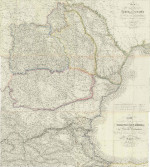 |
|
General-Karte des Fürstenthums Walachei (1867) K.K. Militarisch Geograpische Institut
Source: hungaricana.hu |
 |
|
General-Karte der Europaischen Turkei, nebst Rumanien, Serbien, Montenegro, dann Griechenland (~1870) Zoeller und Neufeld
Source: hungaricana.hu |
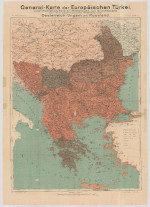 |
|
Romania si terile vecine danubiene (1881) A. Gorjean Population statistics included.
Source: Bibliotheque nationale de France |
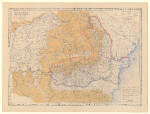 |
|
Romania, Charta Murala (1883) Socecu & Comp.
|
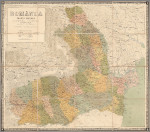 |
|
Harta Generala Romaniei (1911) Socecu & Comp. Regions and counties are listed.
Source: hungaricana.hu |
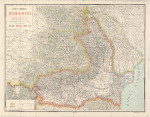 |
|
Rumanien (ante 1918) Bielefeld
|
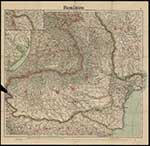 |
|
Karte von Bessarabian und der Moldau (1917) C. Flemming
Courtesy of the Library of Congress |
_C._Flemming.jpg) |
|
Original-Karte des Fuerstenthum's Bulgarien und des Balkans (1870-74) F. Kanitz
Source: Bibliotheque nationale de France |
 |
|
Konigreich Bulgarien und Turkisch Thrakien (1909) K. Peucker
|
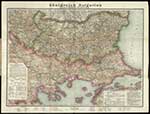 |
